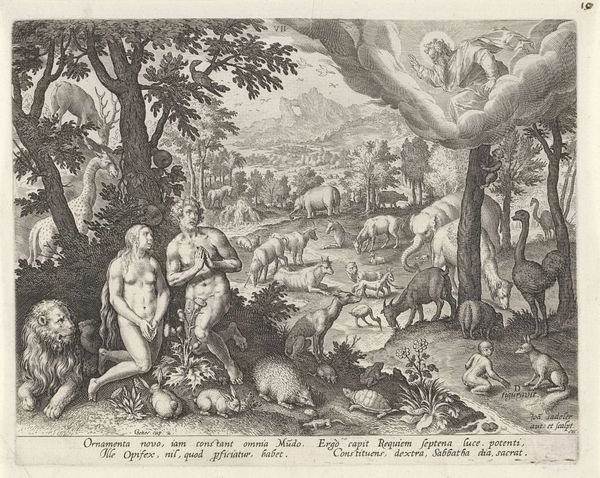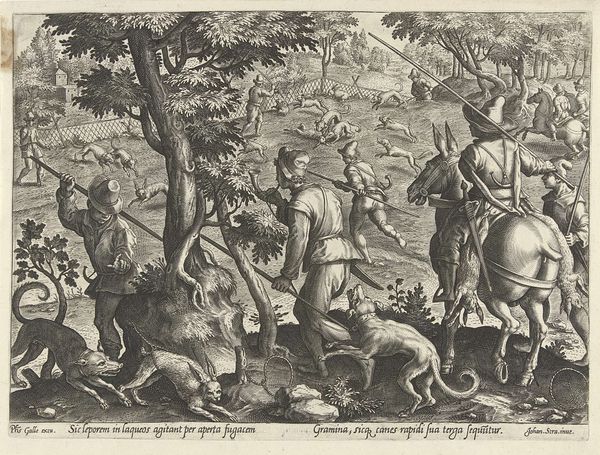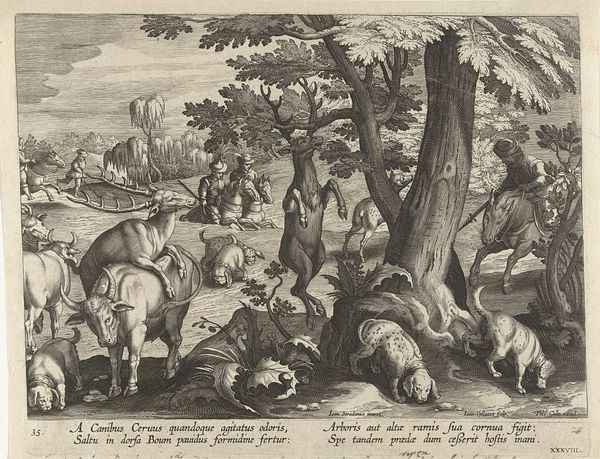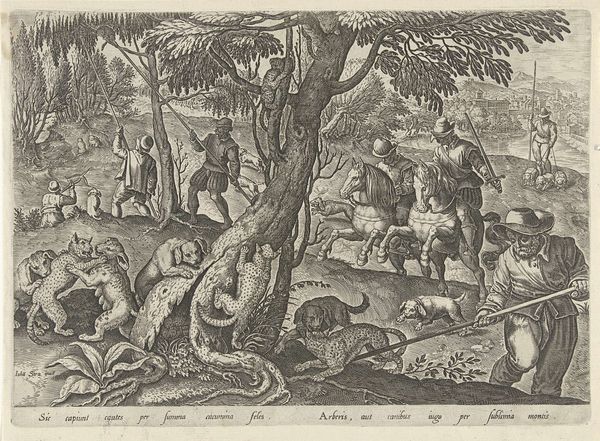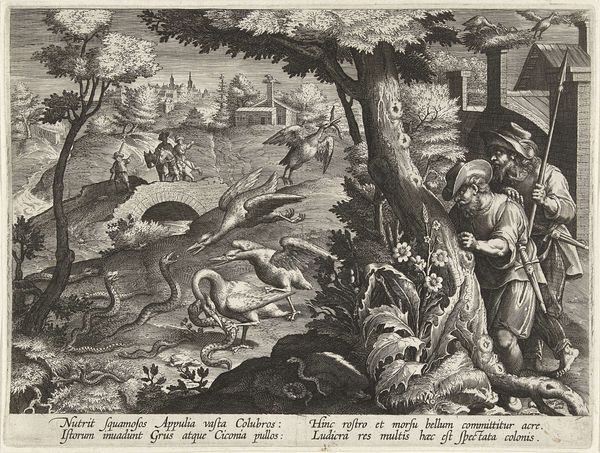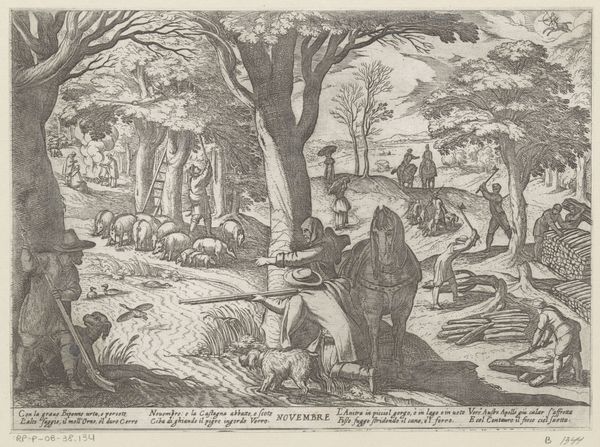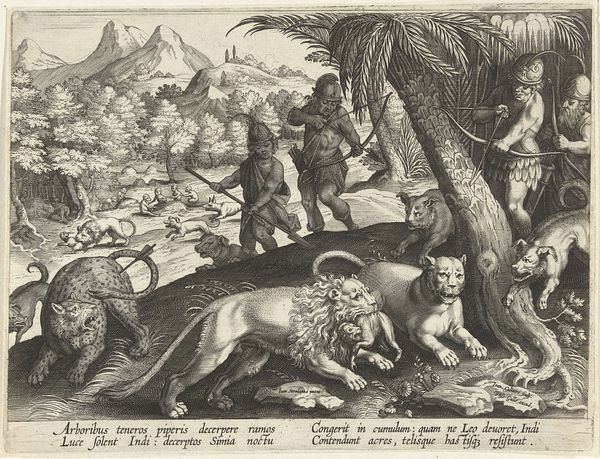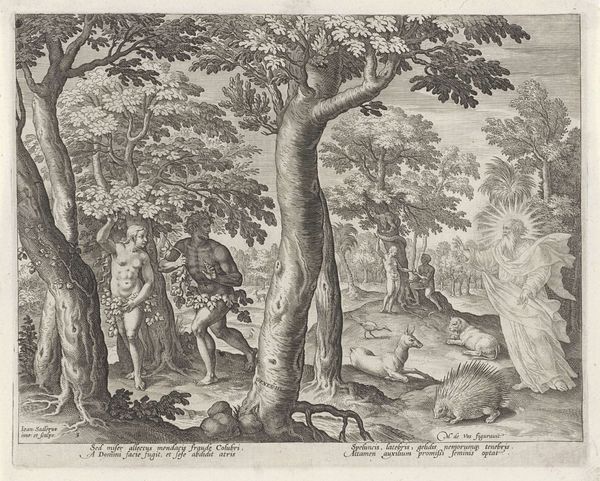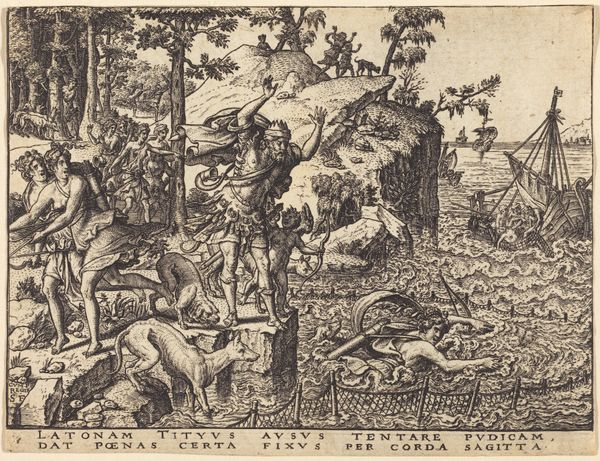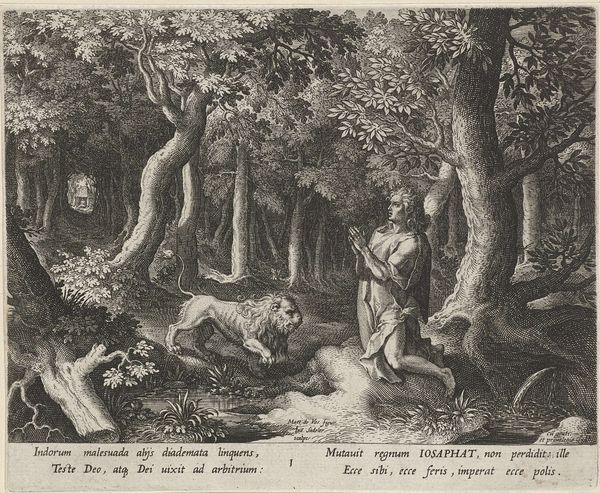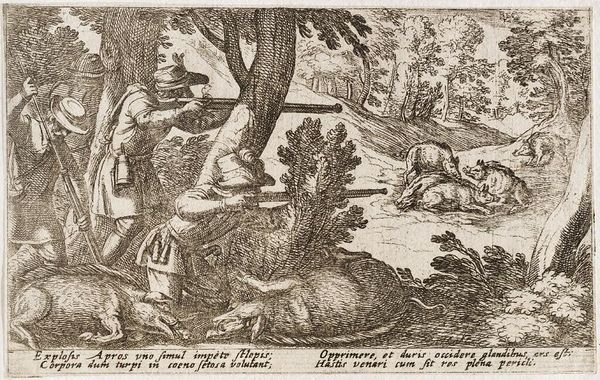
print, engraving
# print
#
landscape
#
figuration
#
genre-painting
#
northern-renaissance
#
engraving
Dimensions: width 264 mm, height 196 mm
Copyright: Rijks Museum: Open Domain
Curator: What a curious image! I’m immediately struck by its peculiar intensity; a feeling of strange activity pervades the scene. Editor: This is "Jacht op luipaarden met menselijke uitwerpselen", or "Hunting Leopards with Human Excrement." It’s an engraving, dating from after 1594, by Jan (II) Collaert, and it’s currently held at the Rijksmuseum. Curator: Human excrement, you say? It’s definitely working! There's something theatrical, almost slapstick, about these leopards reaching for those…buckets…suspended high in the trees. The level of detail is amazing! You can see the individual hairs of their fur. Editor: These types of hunting scenes, no matter how strange, held significance. Hunting wasn't merely recreational; it was enmeshed with social hierarchies and power dynamics. Curator: I see. And what about the landscape? It's more than a backdrop, right? I notice that, while some are caught up with the… excrement, there’s one figure lurking. A hunter? Editor: Precisely. And, this is a genre painting, typical for the Northern Renaissance style, is rife with hidden narratives and symbolic language of class and societal roles. The landscape, while detailed, emphasizes the vulnerability of the leopards within a seemingly safe natural environment. Their actions define their role. The engraving itself played a critical public role, circulating both knowledge and ideology to the masses, influencing perceptions and contributing to societal norms. Curator: Right. So, in addition to its visual appeal and that weird fact, the print functions as a means for social construction! Look how the image simultaneously naturalizes human dominance *and* reveals this calculated vulnerability of other animals and even peoples. It makes me wonder who its primary audience was and the implications embedded within their readings of it. It becomes a loaded site for understanding power and perception. Editor: Absolutely, its cultural resonance goes beyond art, delving into intricate power dynamics and moral ideologies inherent in 16th century European society. I suppose these images really can change how we perceive the world, can't they?
Comments
No comments
Be the first to comment and join the conversation on the ultimate creative platform.
